An early morning autumn mist hangs atmospherically over the lawns and meadows of Emma Burrill’s garden near Rye in East Sussex, softening the contrast between the areas of planting and the wide, open spaces. Later, as the sun banishes the mist, a Modernist-style layout is revealed. Behind the house, wide, double borders, richly planted with perennials and grasses, frame the central grass path that leads the eye to the gently upward-sloping meadow and the woodland beyond.
On the far side of the studio, where Emma works, is a prairie garden planted predominantly with North American native plants, all grown or propagated by Emma. Previous owners had used this area as a sand school for their horses, so once Emma had removed the underlying membrane she had a ready-made, low-fertility sand bed – perfect for prairie plants. Alongside there is an extensive, recently planted orchard and a traditional Kentish cobnut plat (the local phrase for a cobnut orchard, an important landscape characteristic of the neighbouring Kent Downs).
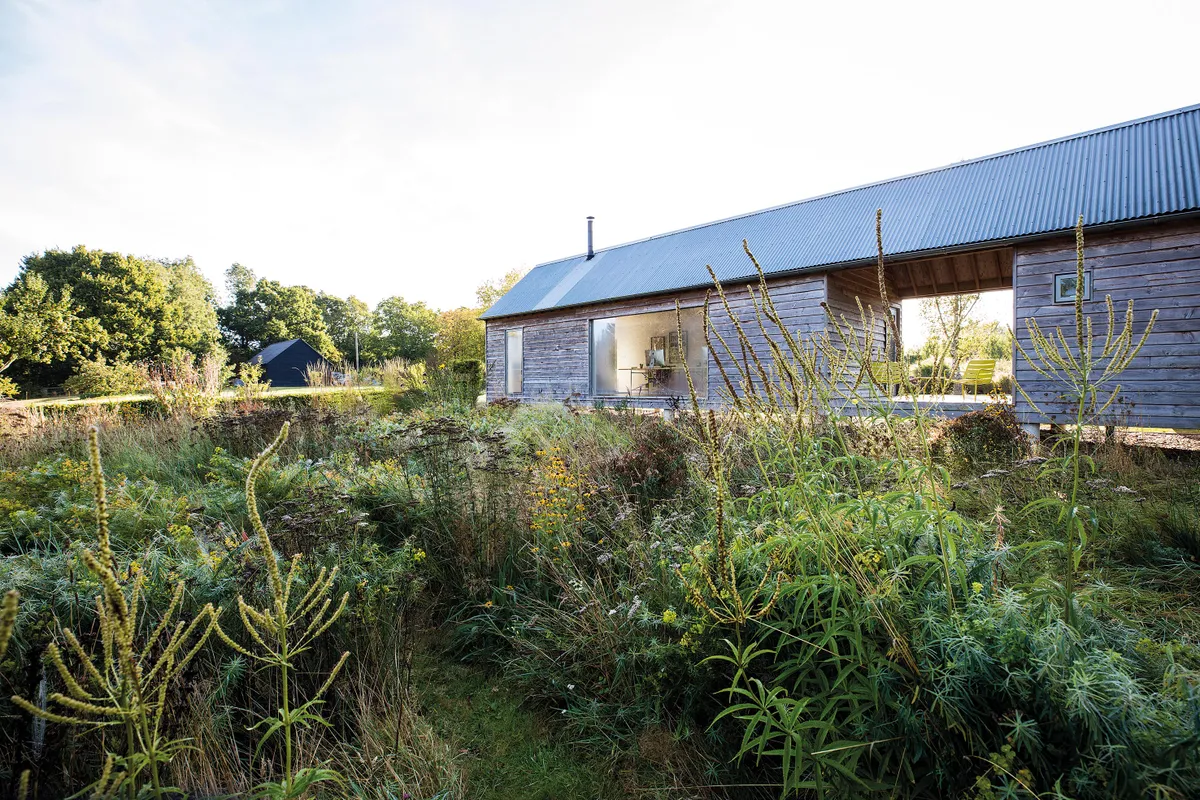
Seven years ago, when Emma and her graphic artist husband Anthony bought the house, there was no garden to speak of, just a mass of willow seedlings, paddocks and a lot of blackthorn scrub. “We spent the first two years clearing the site and rebuilding the house,” says Emma. “The old stables were demolished and we built our studio on the same footprint. I drew an overall plan of the garden when we began the project. Each year we add a new element as we slowly build the larger picture. In our first year we planted 550 native tree whips as part of a Woodland Trust scheme as well as the cobnut plat, laid out on a traditional, offset grid. In order to divide up the space and make sense of the huge, open area, I began to plant a series of hedges using the sight lines of the house and existing landmarks to connect the indoor space with the garden and wider landscape. Over the past four years we have added the borders and orchard.”
Discover more about the garden below.
In brief
What Modernist-style country garden. Where East Sussex. Size Seven acres. Soil Slightly acidic but base is a rich loam and clay. Climate Mild winters and warm, dry summers with fairly low rainfall. Hardiness zone USDA 9.
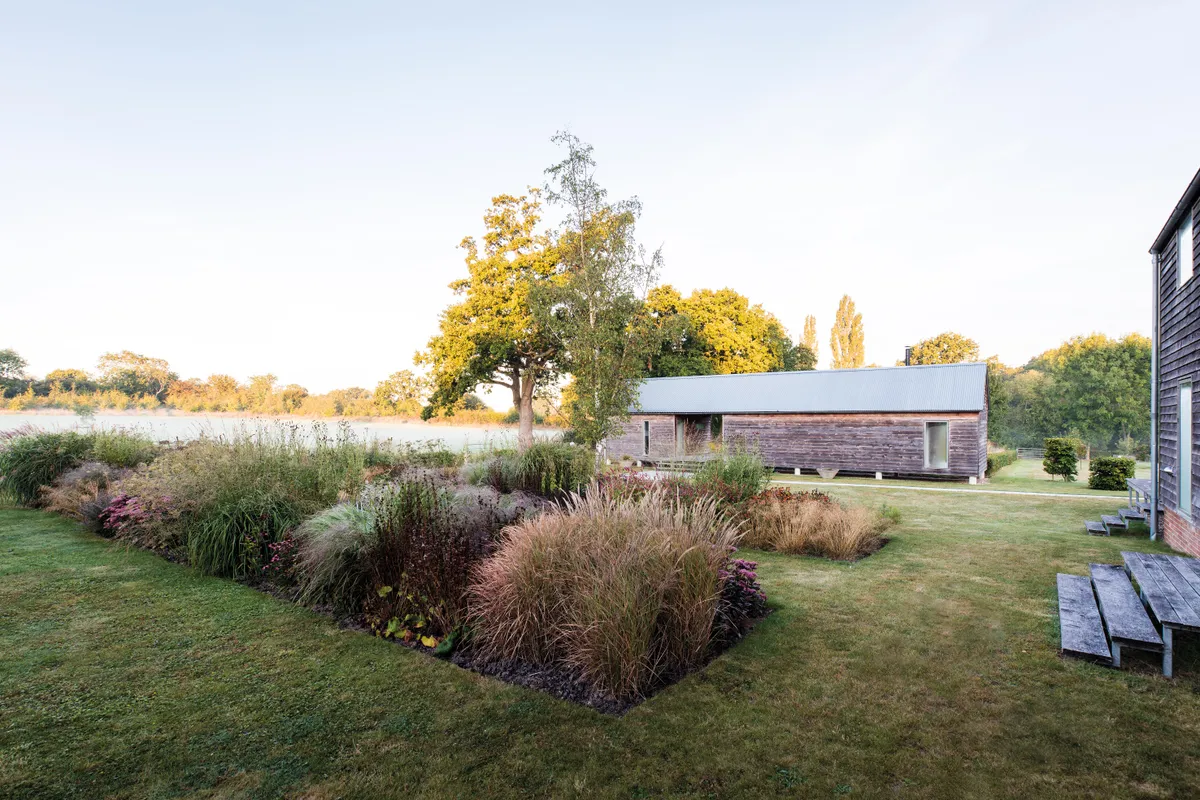
In the L-shaped area of the garden between the house and the studio, three-metre-wide, double borders line the grass path that leads to the meadow beyond. The borders are planted with a mixture of herbaceous perennials and ornamental grasses.
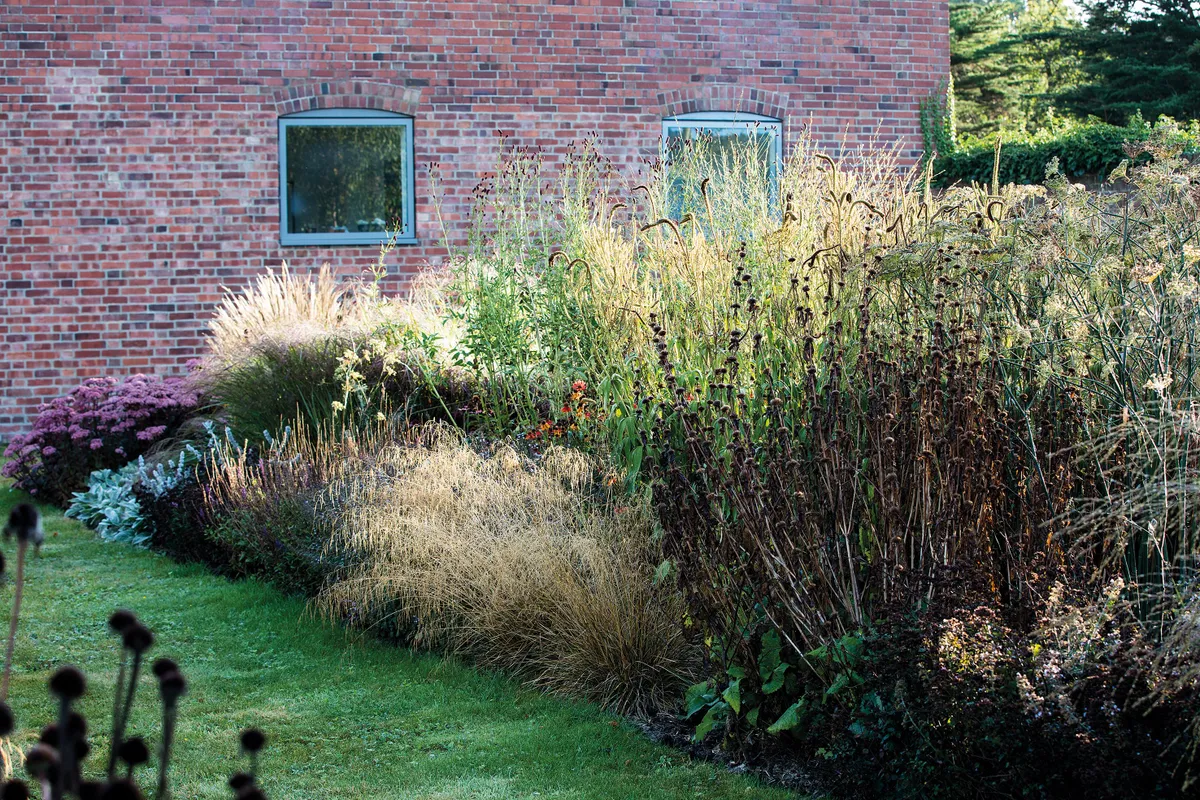
Perennials including Phlomis tuberosa ‘Amazone’ and Sanguisorba ‘Cangshan Cranberry’, and grasses such as Miscanthus sinensis ‘Flamingo’ are chosen for their long season and because they stand well through the winter.
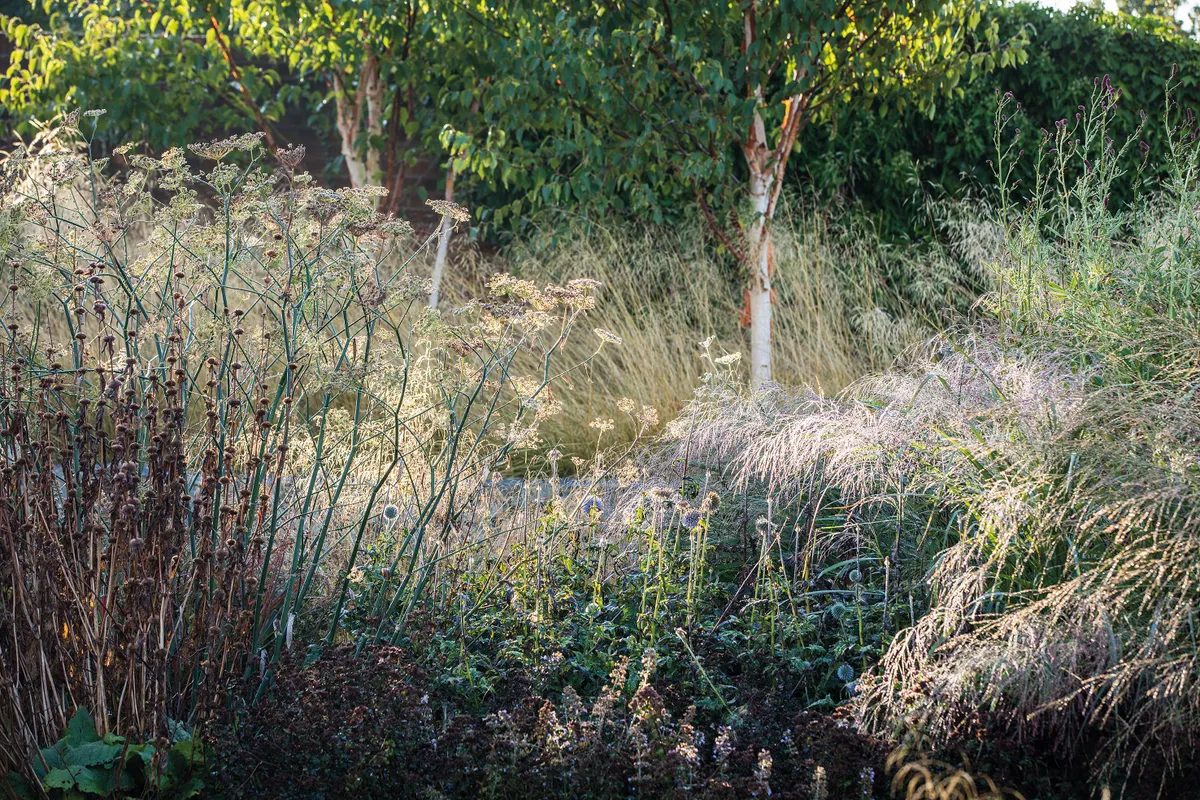
Phlomis, bronze fennel, Panicum virgatum ‘Warrior’ and Deschampsia cespitosa ‘Goldtau’ frame the view through to the attractive, peeling stem of Betula albosinensis var. septentrionalis.

The dense planting of the prairie provides an ever-changing view from the studio; the wiry whorls and spires of Veronicastrum virginicum ‘Lavendelturm’ seedheads are eye-catching in autumn.
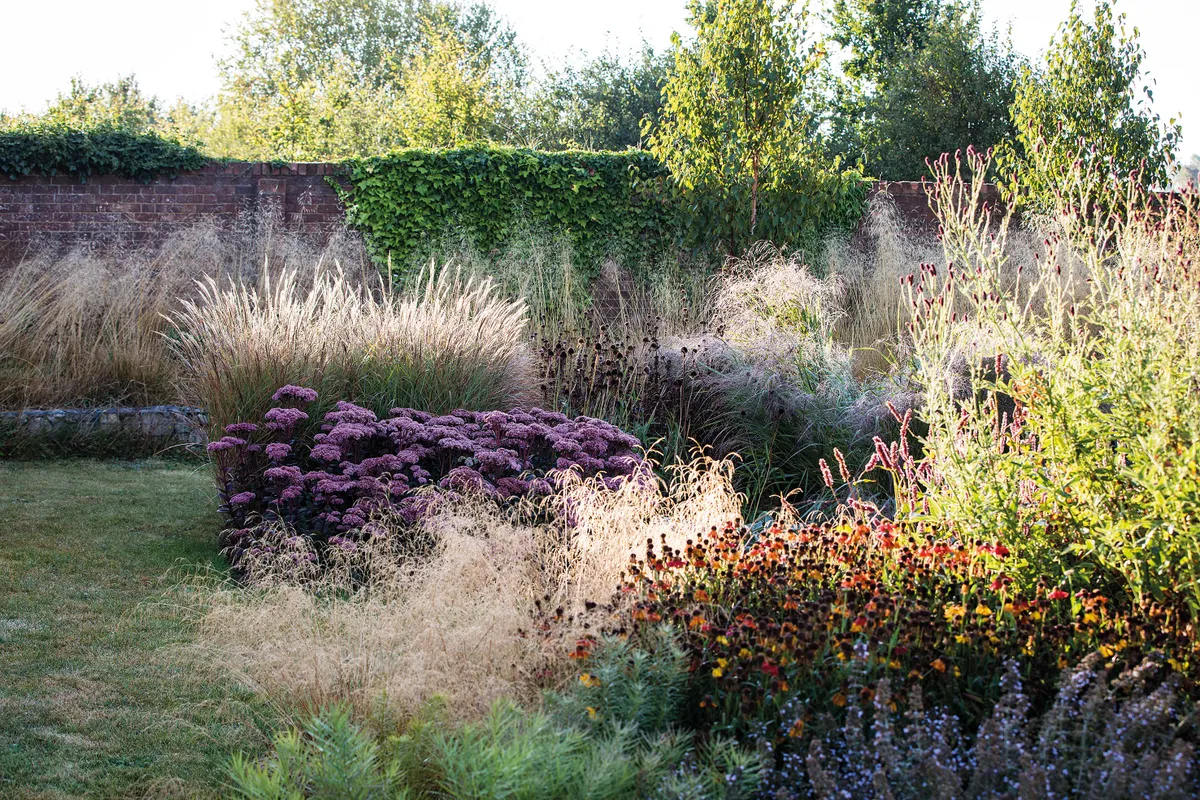
Helenium ‘Moerheim Beauty’ and Hylotelephium ‘Matrona’ provide autumnal colour among the pale grasses, including Miscanthus sinensis ‘Kleine Silberspinne’, in the borders.
I love the point where order meets disorder. I relish the appearance of uninvited plants; by allowing wild plants to creep in, the whole garden softens and connects me to the landscape beyond
12 key plants from Emma Burrill's garden
1
Calamagrostis x acutiflora ‘Karl Foerster’
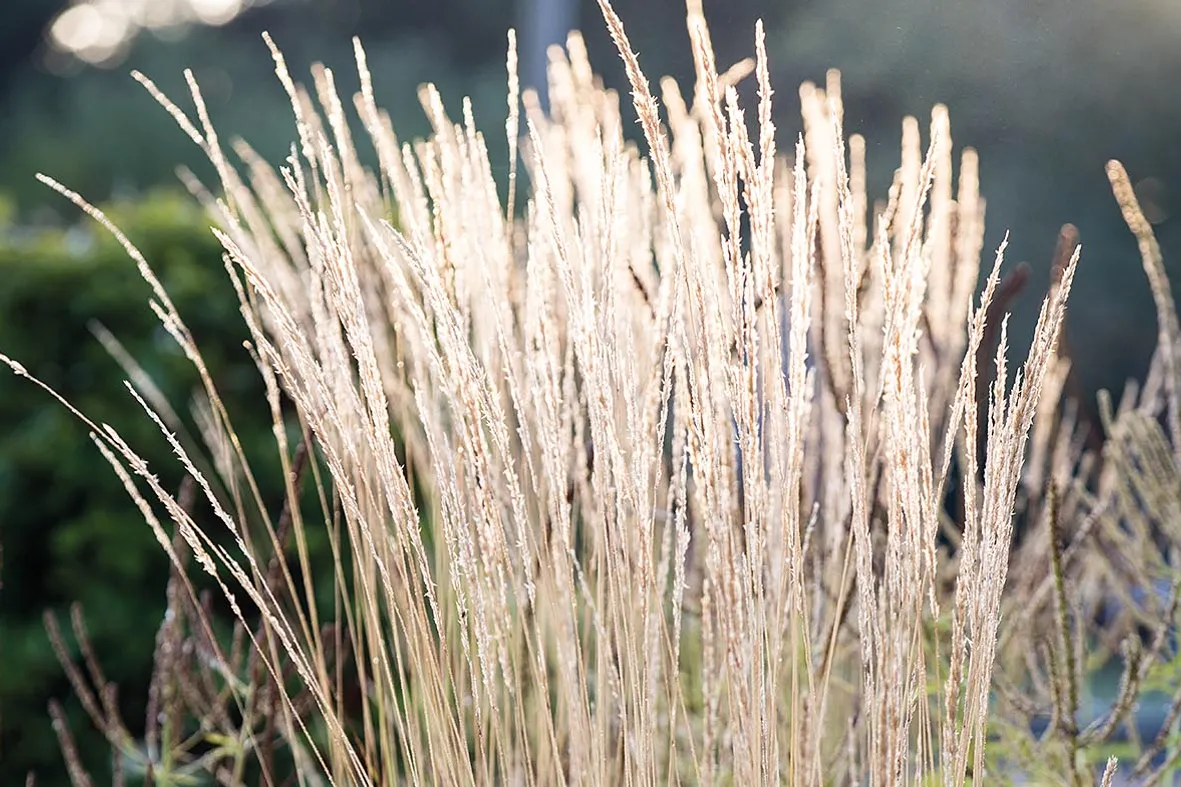
An architectural deciduous grass with strong, vertical flower stems bearing feathery, bronze flowers that fade to an attractive
straw colour in the autumn. 1.5m. AGM. RHS H6, USDA 5a-9b.
2
Helenium ‘Moerheim Beauty’
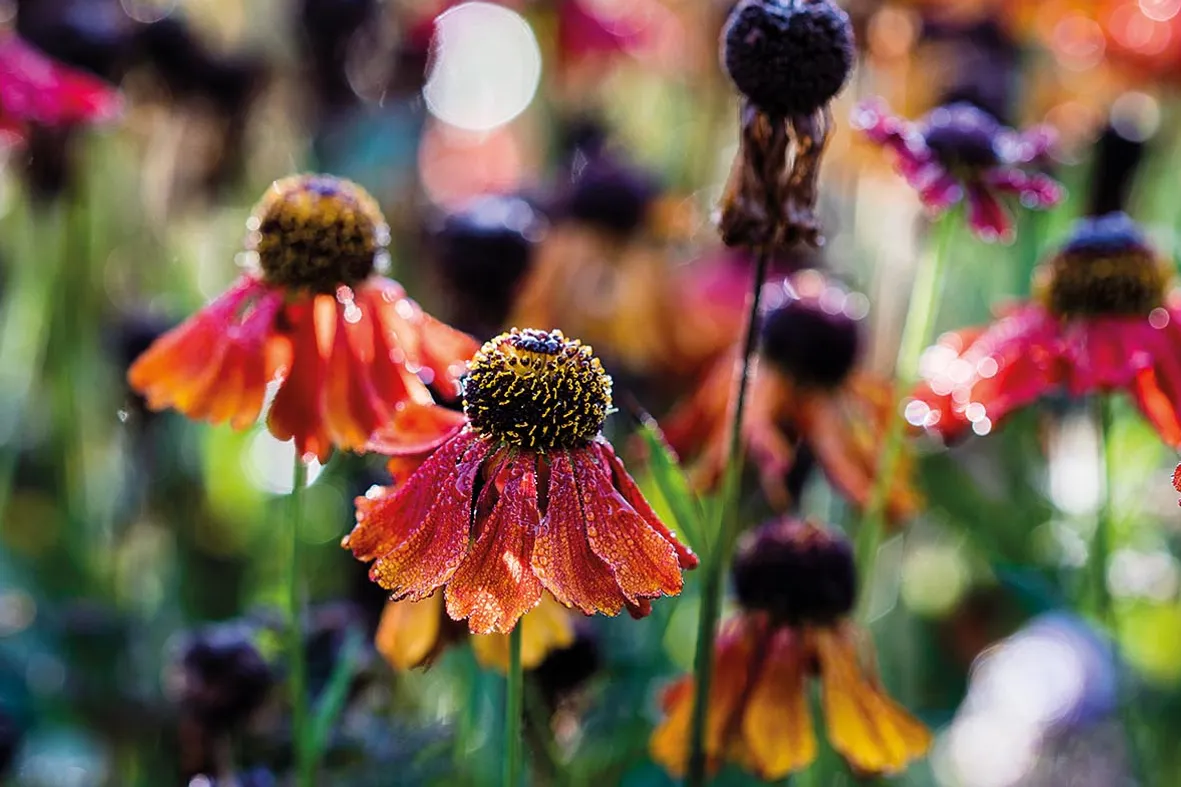
Rich, red-brown, daisy-shaped flowers that fade to burnt orange with brown centres; the stiffly upright stems carry long, mid-green leaves that form an attractive, upright clump. 75cm. AGM. RHS H7, USDA 3a-8b.
3
Veronicastrum virginicum ‘Lavendelturm’
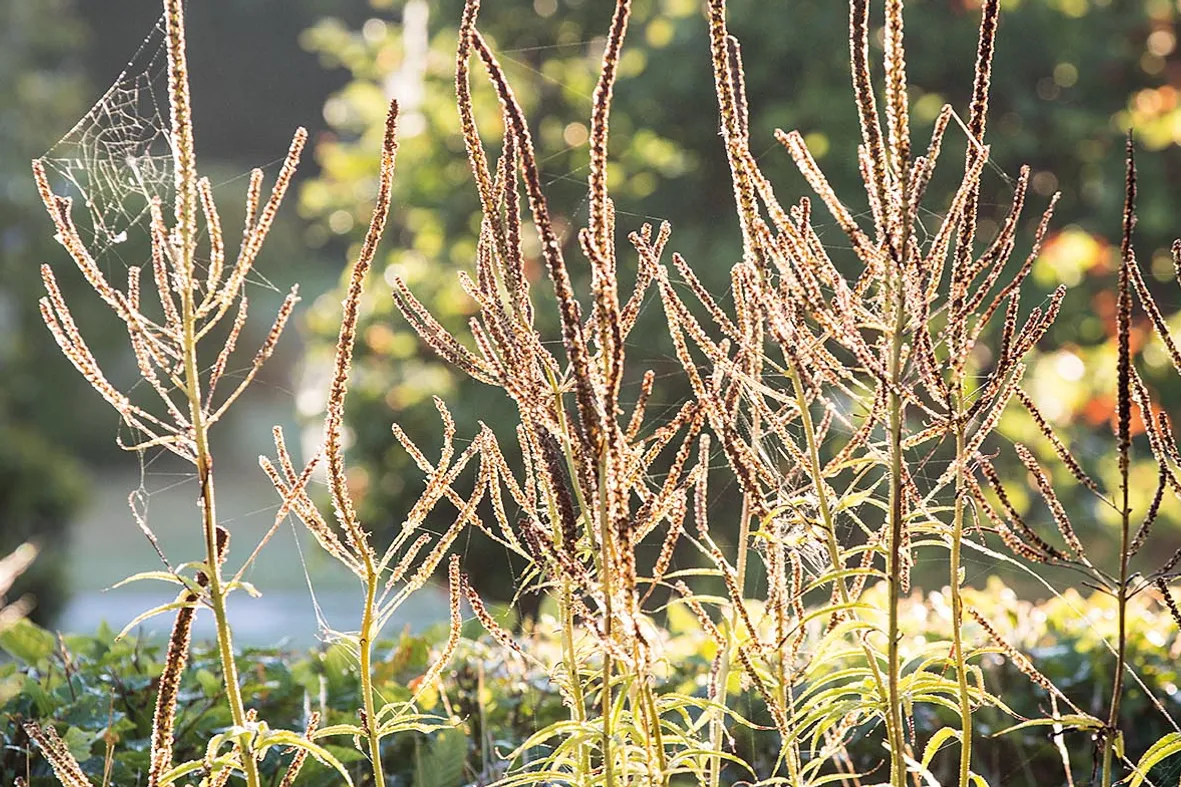
Very slender spires of small, soft-lilac flowers are carried on stiff stems with whorls of long, pointed, mid-green leaves; forms a neat, upright clump. Earlier to flower than other veronicastrums. 2m. AGM. RHS H7.
Here's everything you need to know about veronicastrum
4
Deschampsia cespitosa ‘Goldtau’
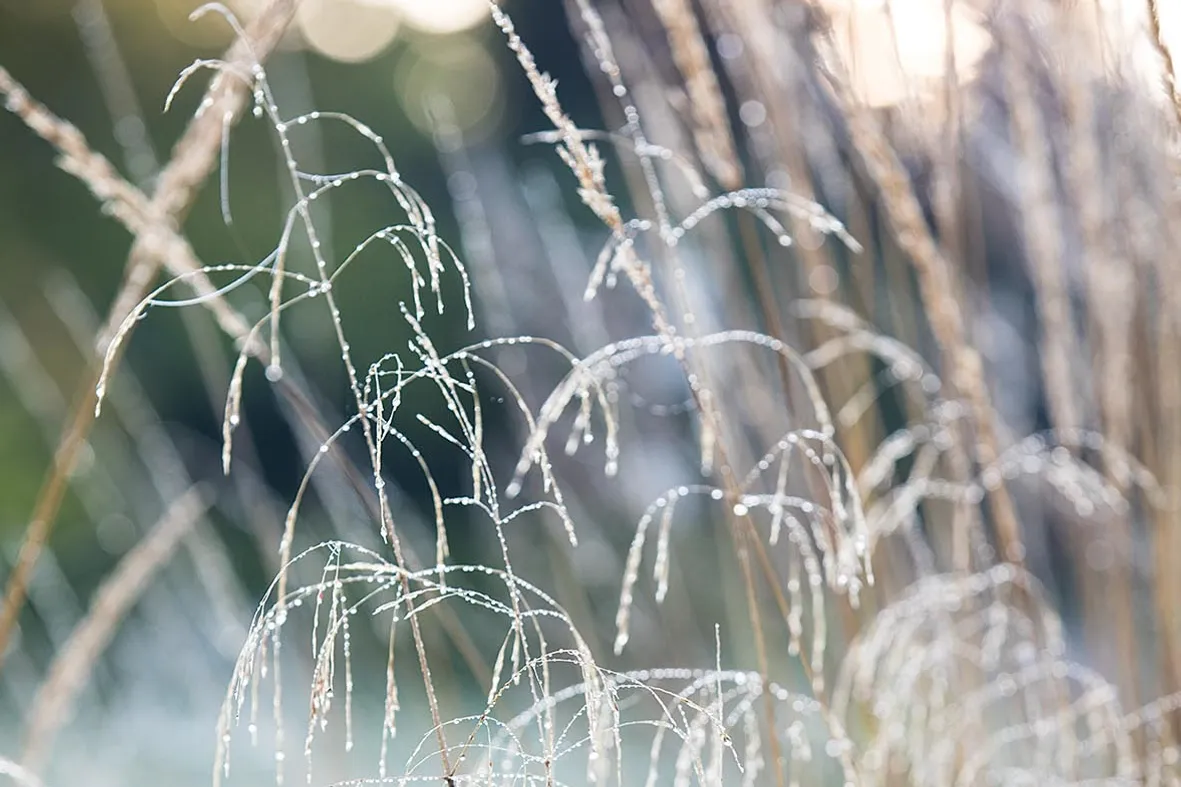
Smaller-growing than some Deschampsia cespitosa with dark-green leaves ageing to golden brown; long-lasting flower plumes are silvery brown and green, turning warm gold as they mature, giving a shimmering effect. 75cm. AGM. RHS H6.
5
Hylotelephium ‘Matrona’
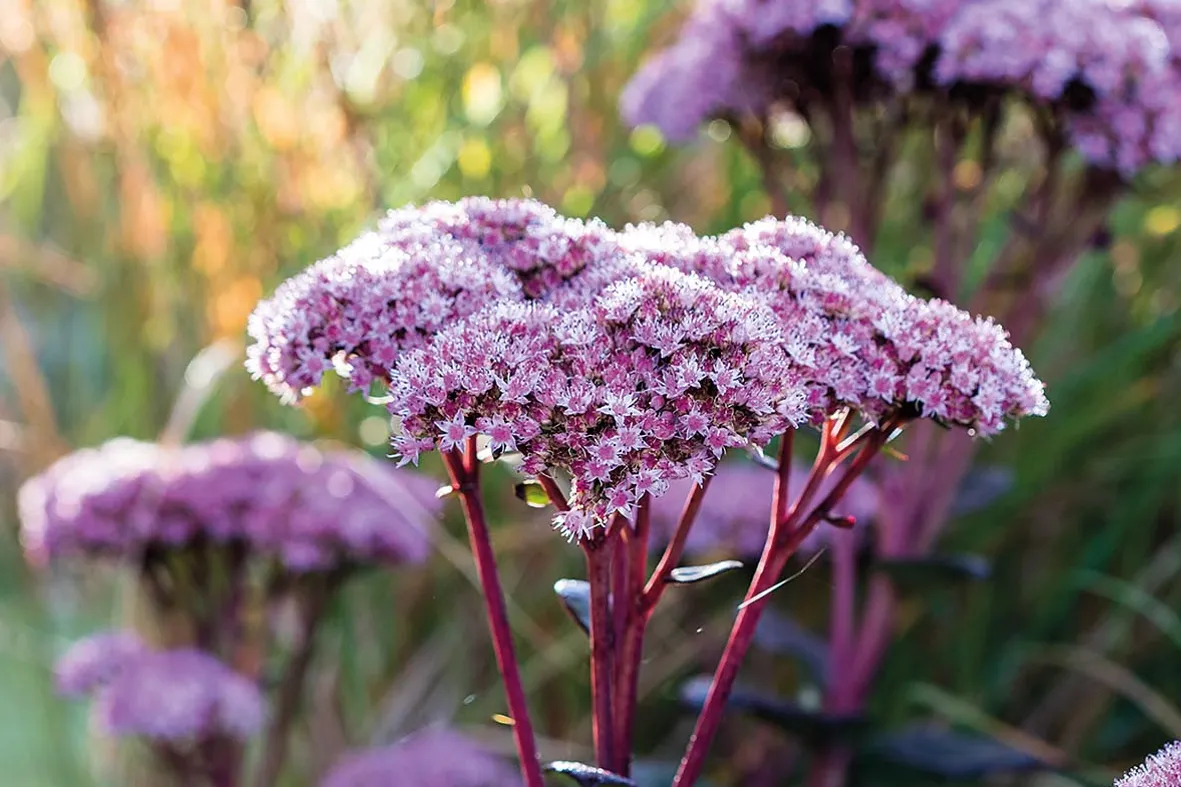
An upright, deciduous perennial with large, ovate, grey-green leaves tinged purple near the margins, and dense clusters of pale-pink flowers in summer and early autumn; much loved by insects. 60cm. AGM. RHS H7, USDA 3a-9b.
6
Amsonia hubrichtii
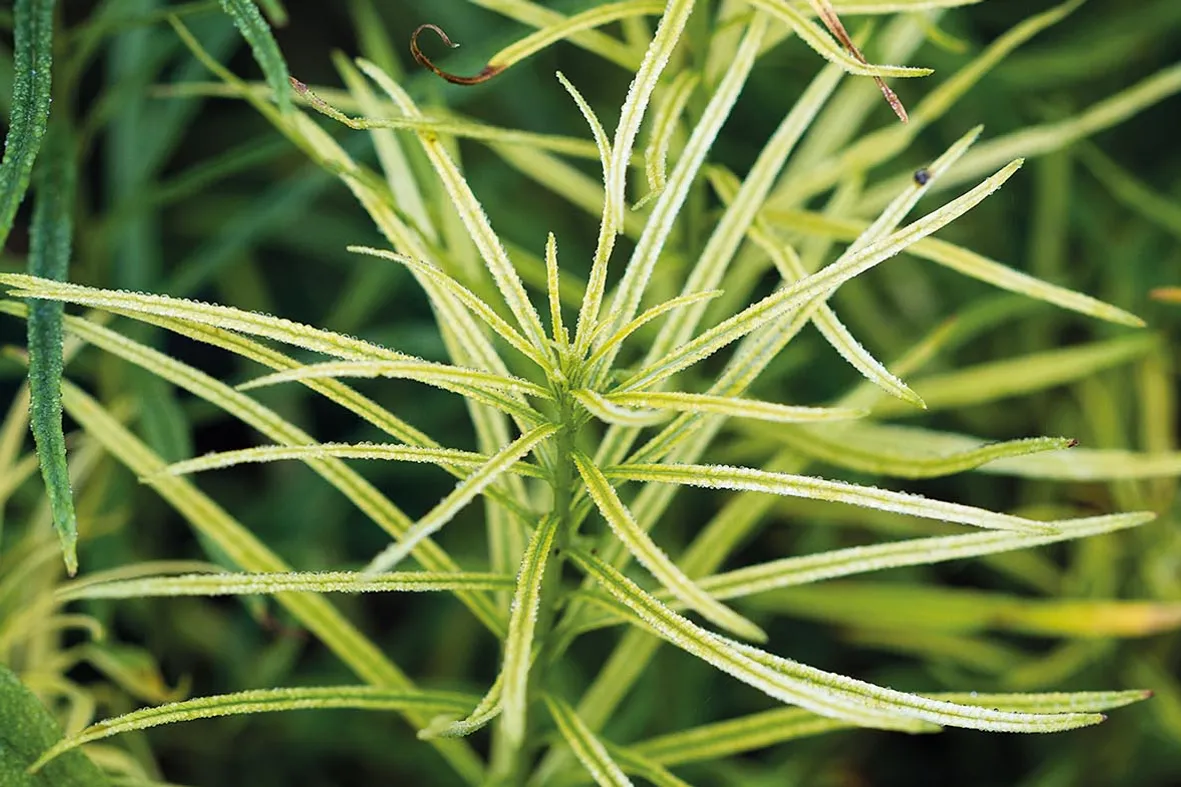
An erect, clump-forming plant that bears terminal panicles of blue flowers in spring, the feathery, lance-shaped leaves are bright green in summer but turn beautifully golden in autumn. 90cm. RHS H7, USDA 5a-8b.
7
Rudbeckia triloba
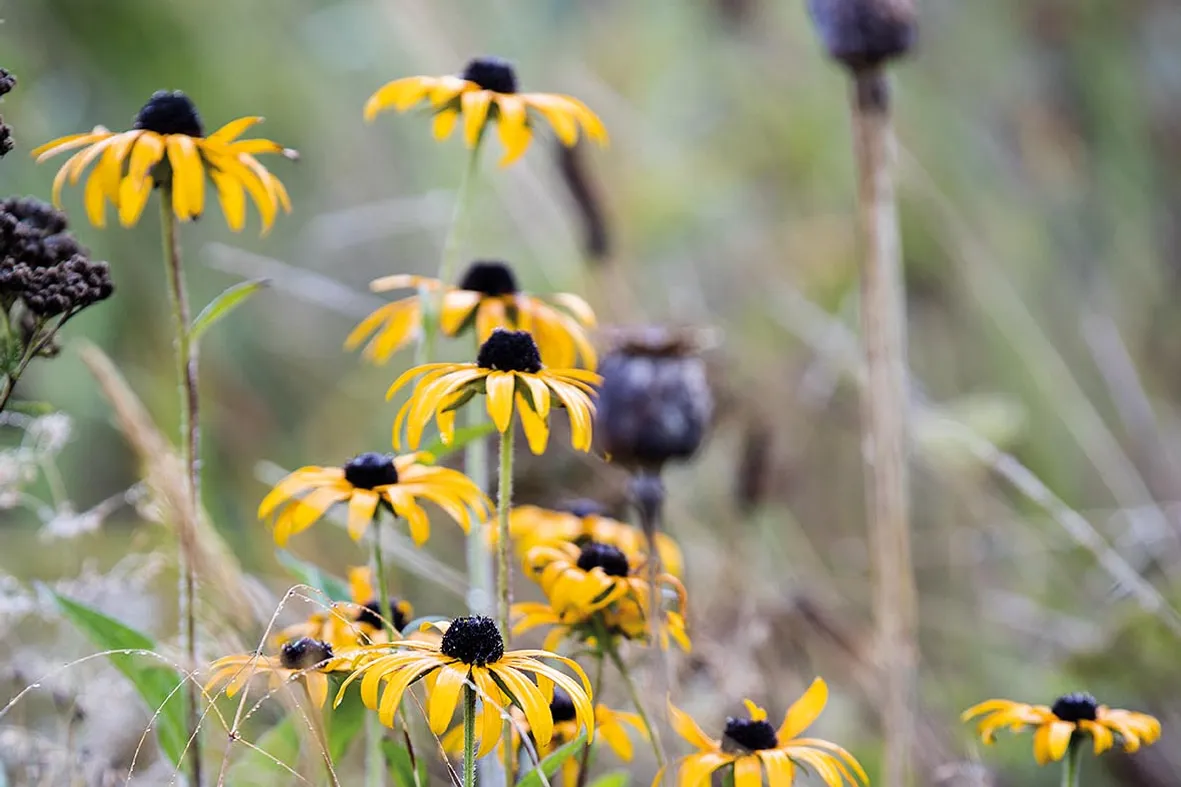
A short-lived perennial that bears small, daisy-like flowerheads with dark, conical centres and broad, reflexed yellow petals on wiry stems; the display is long lasting from late summer. 90cm. AGM. RHS H6, USDA 4a-8b.
How to care for and grow rudbeckia
8
Sanguisorba ‘Cangshan Cranberry’
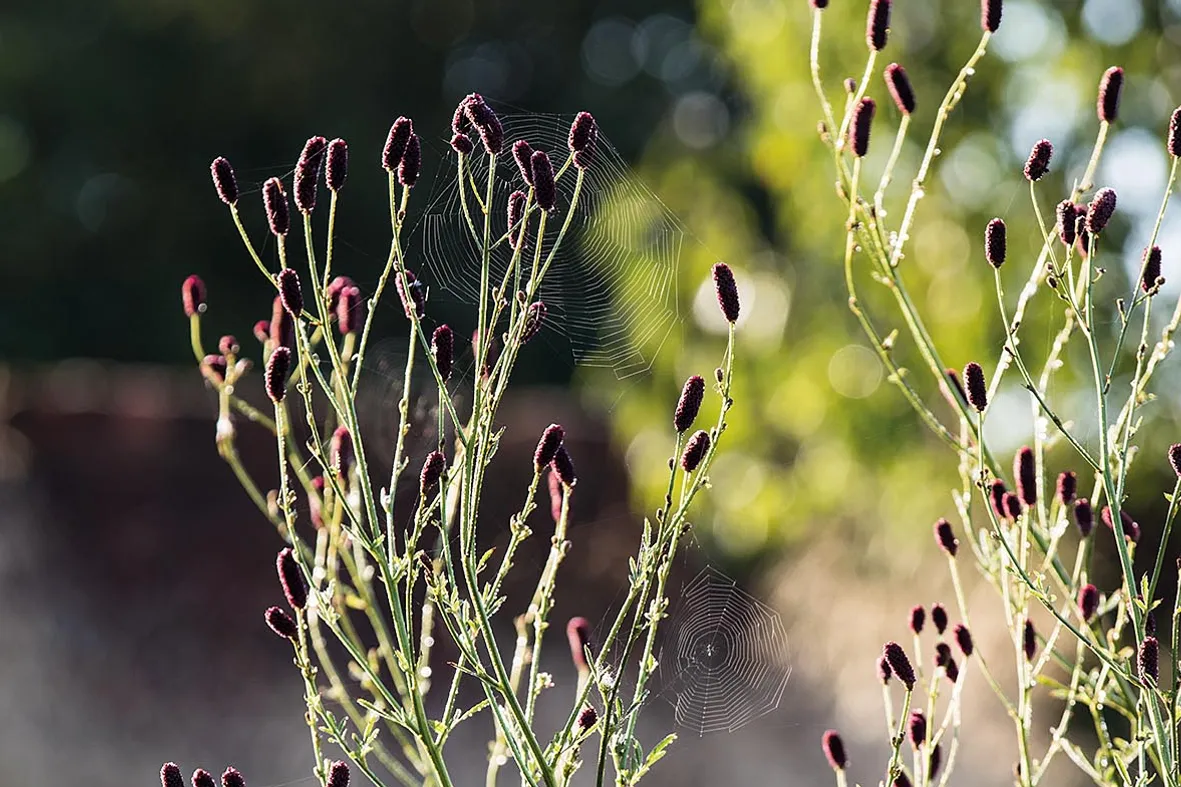
A tall, herbaceous perennial. Leaves bear oval leaflets with jagged edges; dark, purplish-red, drumstick flowers are carried on wiry, see-through stems from late summer into autumn; dead stems remain a feature in winter. 2m. RHS H7.
9
Echinacea purpurea ‘Magnus’
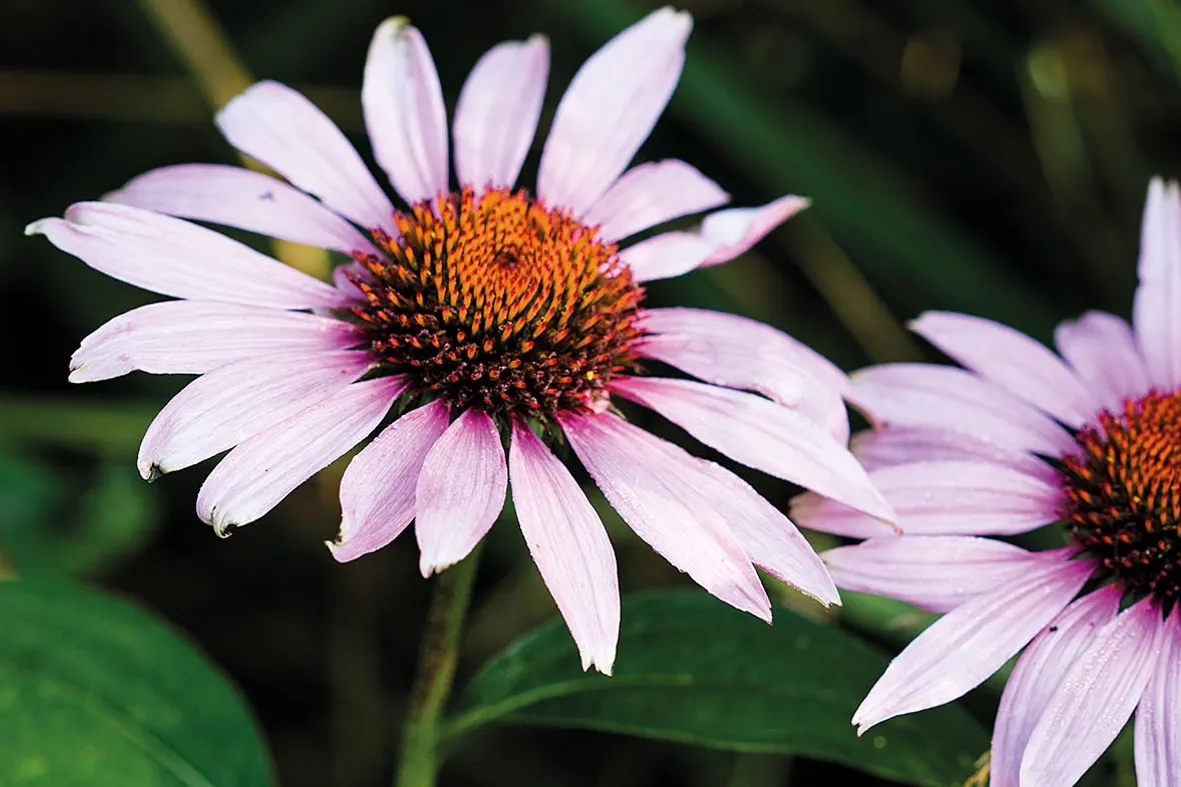
Bears large, deep rosy-purple flowers with a prominent orange centre on stiff, upright stems over a long flowering season; the petals are held horizontally rather than drooping like many echinaceas. 90cm. RHS H5, USDA 3a-8b.
10
Persicaria amplexicaulis ‘Blackfield’
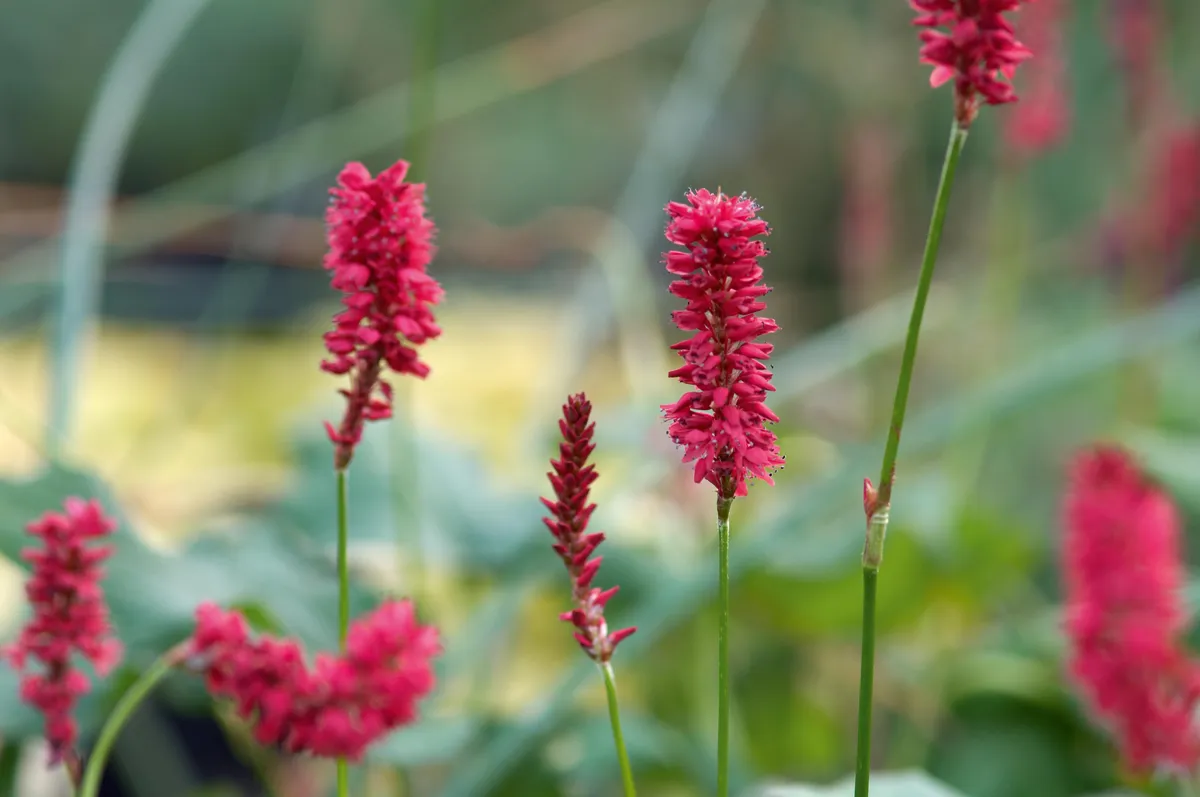
A clump-forming perennial with intense, blood-red flower spikes from midsummer to mid-autumn; eye-catching, brilliantly coloured, fluffy flowers open from near-black buds and attract beneficial insects. 80cm. RHS H7.
Here's how to grow persicaria or bistorta
11
Laser trilobum
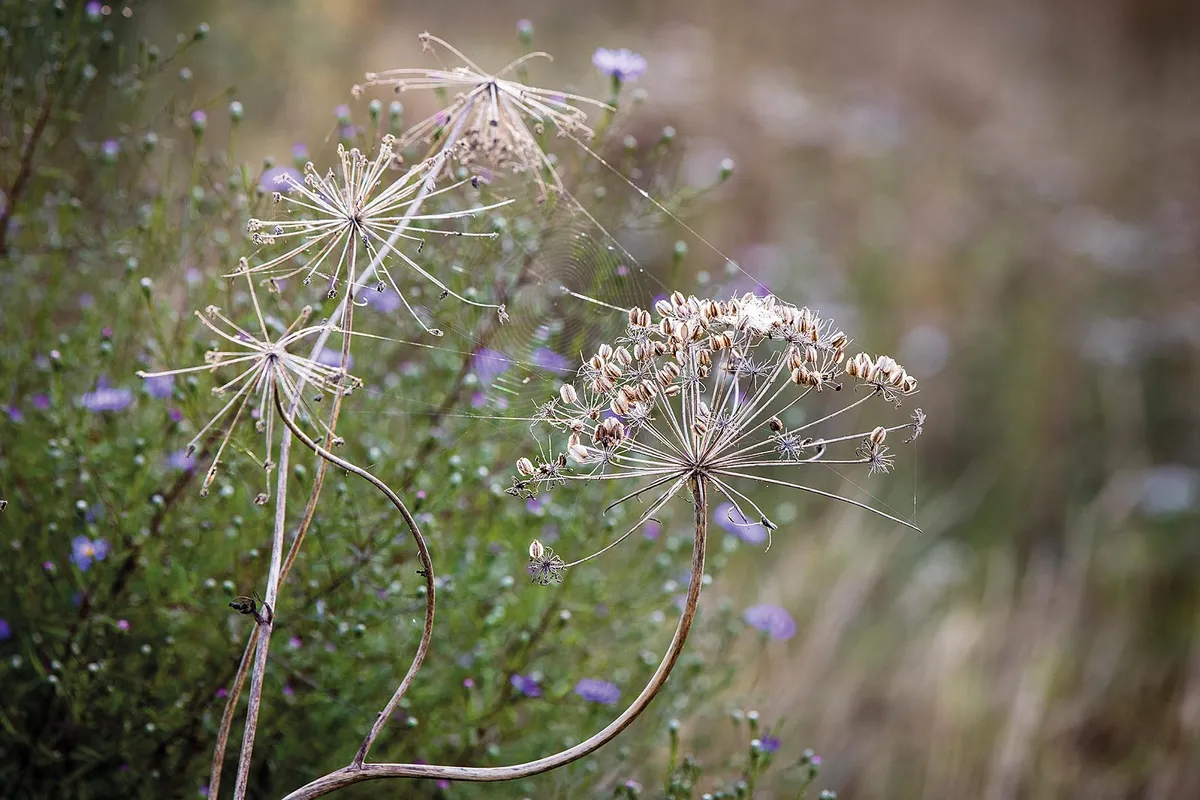
An unusual umbellifer with an aromatic scent. It will grow in shade or partial shade, bearing airy, white umbels with aquilegia-like, glaucous leaves. 1.2m.
12
Miscanthus sinensis ‘Kleine Silberspinne’
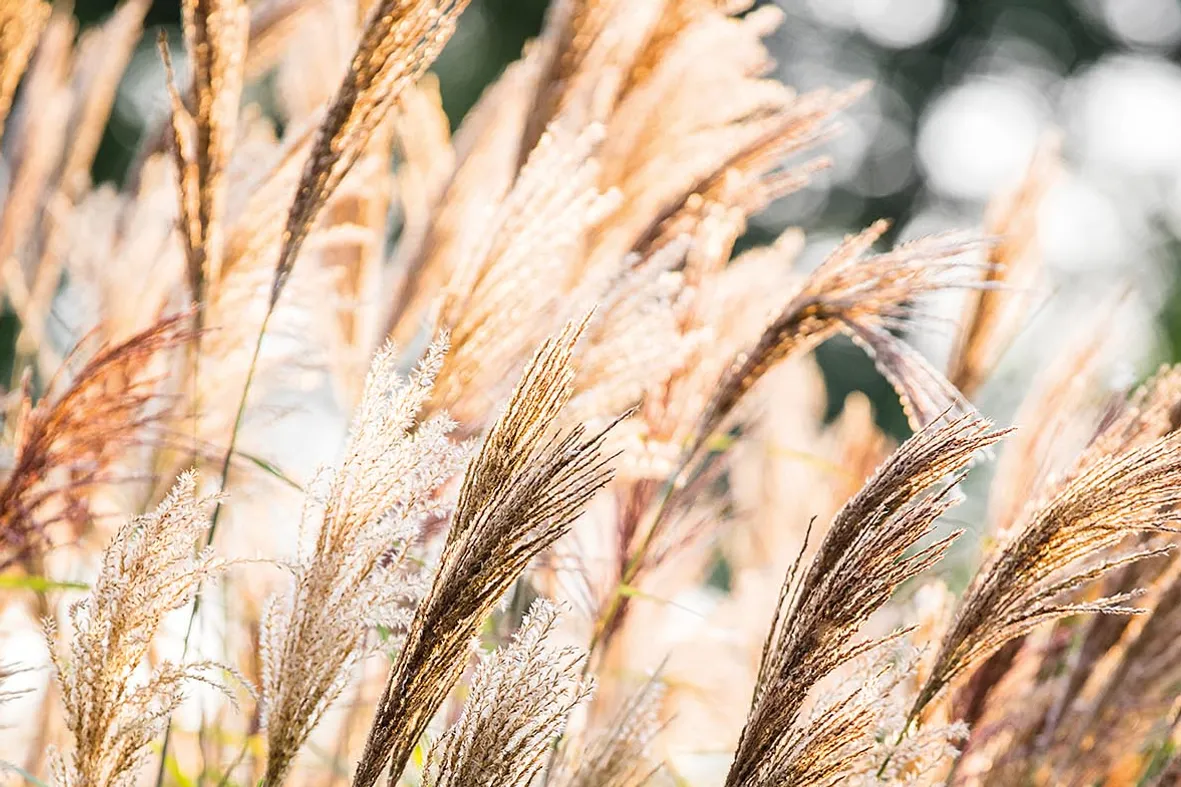
Forms a compact clump of arching, narrow leaves with white midribs, and tall, feathery, reddish flowerheads in late summer, soon turning pale brown and lasting well into winter. 1.2m. AGM. RHS H6.




